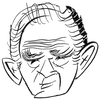The Mailer Review/Volume 4, 2010/Norman Mailer's The Fight: Hemingway, Bullfighting, and the Lovely Metaphysics of Boxing: Difference between revisions
Appearance
TWietstruk (talk | contribs) m added byline |
TWietstruk (talk | contribs) adding the start of notes, citations |
||
| Line 88: | Line 88: | ||
Where does The Fight ultimately belong in Norman Mailer’s life’s work? Is it a self-aggrandizing study of a sport, the nuances of which only a select few appreciate or care about? Is The Fight Mailer’s Death in the Afternoon— the disquisition on bullfighting Hemingway wrote as a young man—or more precisely his The Dangerous Summer, Hemingway’s revisitation of the bullfights at the end of his career? Is it Mailer’s A Moveable Feast, a version of his memoirs? Does it equate to the two books Hemingway devoted to African safaris? A combination of all of these? The Fight, ultimately, illuminates the reader of the way Mailer views violence, writing, and Hemingway himself, which positions it as a supplementary text to virtually every other major Mailer effort. With Hemingway and bullfighting as constant presences in The Fight, these intertextual questions yield results that allow Mailer’s project to transcend journalism, or sports writing, to become a key text to determining his restatement of Hemingway’s classic twentieth-century themes. | Where does The Fight ultimately belong in Norman Mailer’s life’s work? Is it a self-aggrandizing study of a sport, the nuances of which only a select few appreciate or care about? Is The Fight Mailer’s Death in the Afternoon— the disquisition on bullfighting Hemingway wrote as a young man—or more precisely his The Dangerous Summer, Hemingway’s revisitation of the bullfights at the end of his career? Is it Mailer’s A Moveable Feast, a version of his memoirs? Does it equate to the two books Hemingway devoted to African safaris? A combination of all of these? The Fight, ultimately, illuminates the reader of the way Mailer views violence, writing, and Hemingway himself, which positions it as a supplementary text to virtually every other major Mailer effort. With Hemingway and bullfighting as constant presences in The Fight, these intertextual questions yield results that allow Mailer’s project to transcend journalism, or sports writing, to become a key text to determining his restatement of Hemingway’s classic twentieth-century themes. | ||
===Works Cited=== | |||
{{Refbegin}} | |||
* {{cite book |last= |first= |date= |title= |url= |location= |publisher= |pages= |ref=harv }} | |||
* {{cite journal |last= |first= |title= |url= |journal= |volume= |issue= |date= |pages= |access-date= |ref=harv }} | |||
* {{cite magazine |last= |first= |date= |title= |url= |magazine= |pages= |access-date= |ref=harv }} | |||
* {{cite news |last= |first= |date= |title= |url= |work= |location= |access-date= |ref=harv }} | |||
* {{cite web |url= |title= |last= |first= |date= |website= |publisher= |access-date= |quote= |ref=harv }} | |||
{{Refend}} | |||
